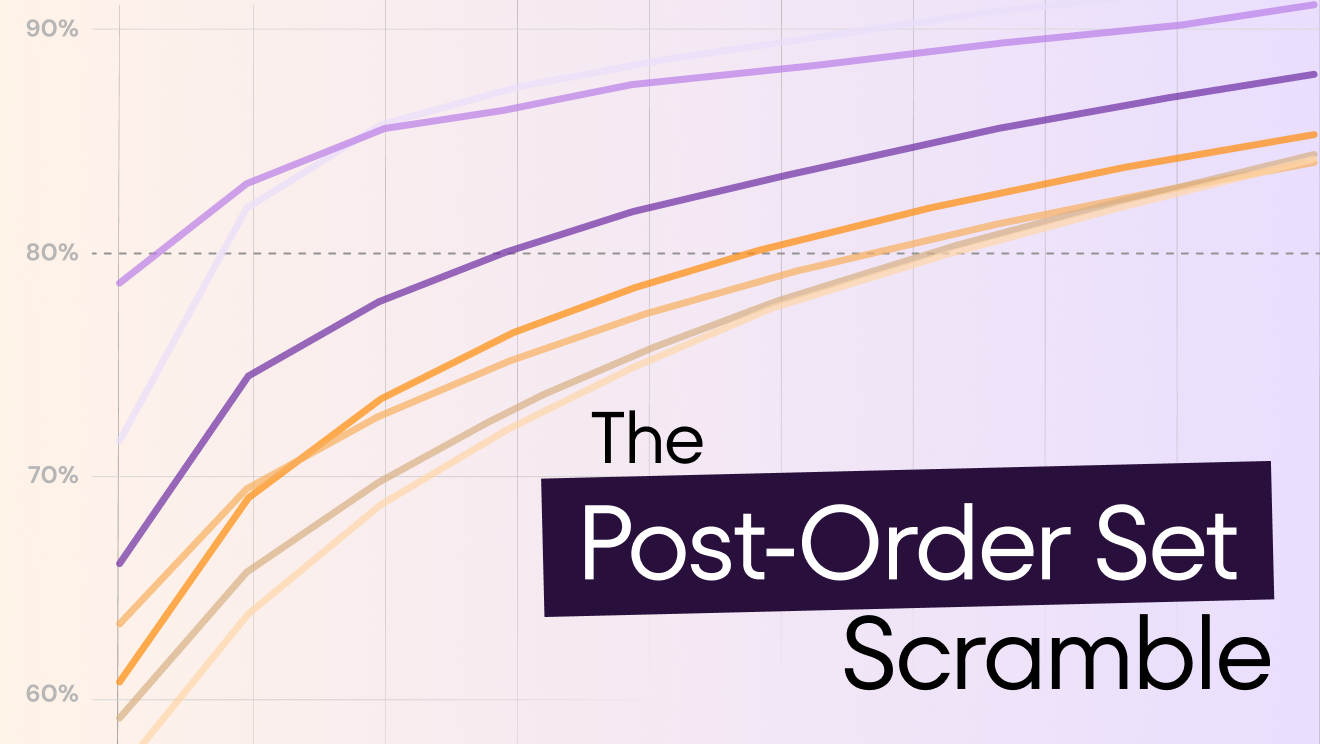Blog
How I think about variation and waste when clinicians diverge from an order set
Why do clinicians stray from even the best-built order sets? Our data show three repeatable patterns—each pointing to a different fix. Spotting them quickly can turn variation and waste into safer, more efficient care.


How I think about variation and waste when clinicians diverge from an order set
Before we talk numbers, remember: order set adoption is as much cultural and political as it is technical. Education, champion engagement, even bonus structures tied to usage all matter. But once adoption is underway, the real work begins to make them efficient and effective. Let's dig into the data to see where reality parts ways with design.
I see three common patterns across health systems:
1️⃣ “Great catch—let’s just add it.”
An order shows up minutes later because it simply wasn’t on the set. We saw a high frequency of prednisone orders added soon after the use of a pulmonary discharge order set. Sure enough it wasn't anywhere on the order set. The health system client added it and the extra clicks (and potential for variation in care!) disappeared.
2️⃣ “Wait… why are we doing that?”
The order was deliberately left off—contraindicated, low-value, or not evidence-based. These cases are gold for quality and stewardship teams. Often it’s a signal that decision support isn’t accessible at the point of care when a decision for ordering is being made. For this bucket, I love the “do-not-order” pattern (see the Pediatrics study ➡ https://doi.org/10.1542/peds.2019-0306): show the order unchecked, explain why it shouldn't be used, and watch inappropriate variation drop.
3️⃣ “I know it’s in there somewhere.”
The order exists but is buried in a sprawling order set. Busy clinicians default-place and move on, then tack on extras later. That tells us to streamline layout, prune low-value sections, and make high-frequency orders more prevalent.
At Phrase Health we track two simple related metrics for our clients:
• Orders within 5 minutes – the straightforward “something’s missing” analysis that enables granular filtering
• Phrase Follow-On Orders Index – a normalized metric for cross-system benchmarking
The goal isn’t zero as all patients are unique, but hot spots guide rapid design tweaks. And because we overlay the data on the actual order set UI, informatics and quality teams can instantly see what part of the design is rarely touched by clinicians and what’s causing friction.
Bottom line: make the right thing the easy thing with evidence-based care, delivered at the point of need, and in a way that clinicians actually want to use it.
Why do clinicians stray from even the best-built order sets? Our data show three repeatable patterns—each pointing to a different fix. Spotting them quickly can turn variation and waste into safer, more efficient care.

Written by
Marc Tobias
Jul 21, 2025
Written by
Marc Tobias
Jul 21, 2025
Before we talk numbers, remember: order set adoption is as much cultural and political as it is technical. Education, champion engagement, even bonus structures tied to usage all matter. But once adoption is underway, the real work begins to make them efficient and effective. Let's dig into the data to see where reality parts ways with design.
I see three common patterns across health systems:
1️⃣ “Great catch—let’s just add it.”
An order shows up minutes later because it simply wasn’t on the set. We saw a high frequency of prednisone orders added soon after the use of a pulmonary discharge order set. Sure enough it wasn't anywhere on the order set. The health system client added it and the extra clicks (and potential for variation in care!) disappeared.
2️⃣ “Wait… why are we doing that?”
The order was deliberately left off—contraindicated, low-value, or not evidence-based. These cases are gold for quality and stewardship teams. Often it’s a signal that decision support isn’t accessible at the point of care when a decision for ordering is being made. For this bucket, I love the “do-not-order” pattern (see the Pediatrics study ➡ https://doi.org/10.1542/peds.2019-0306): show the order unchecked, explain why it shouldn't be used, and watch inappropriate variation drop.
3️⃣ “I know it’s in there somewhere.”
The order exists but is buried in a sprawling order set. Busy clinicians default-place and move on, then tack on extras later. That tells us to streamline layout, prune low-value sections, and make high-frequency orders more prevalent.
At Phrase Health we track two simple related metrics for our clients:
• Orders within 5 minutes – the straightforward “something’s missing” analysis that enables granular filtering
• Phrase Follow-On Orders Index – a normalized metric for cross-system benchmarking
The goal isn’t zero as all patients are unique, but hot spots guide rapid design tweaks. And because we overlay the data on the actual order set UI, informatics and quality teams can instantly see what part of the design is rarely touched by clinicians and what’s causing friction.
Bottom line: make the right thing the easy thing with evidence-based care, delivered at the point of need, and in a way that clinicians actually want to use it.

.svg)
.svg)


